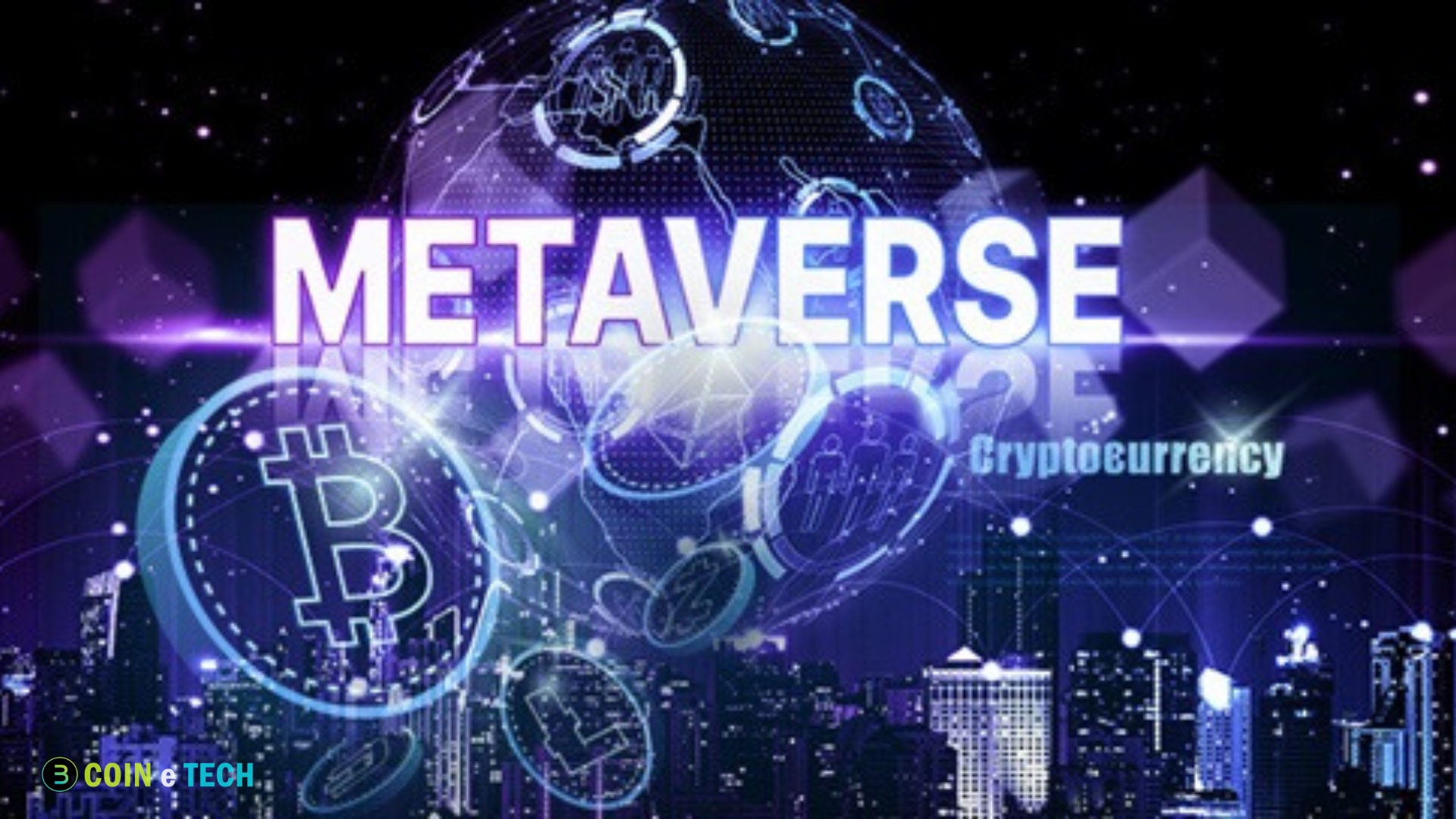A fascinating new frontier in technology has been opening up at the intersection of crypto and the metaverse in the last several years. Crypto and metaverse are separate but interconnected phenomena that propel technological advancement in the modern day. They’re establishing new economic ecosystems, changing how people connect online, and shaking up established businesses. This essay delves into the growing nature of these two notions and how they are coming together to shape future digital experiences. It also analyzes how this merger might change our perception of worth, ownership, and community.
Understanding the Metaverse
People frequently use the term “metaverse” to refer to a network of digital locations where users may engage in activities such as socializing, working, playing, and shopping inside immersive, three-dimensional settings. Virtual reality (VR), augmented reality (AR), and the real world come together in this place via shared, permanent VR experiences. The phrase “metaverse” first appeared in the science fiction novel Snow Crash by Neal Stephenson in 1992. Still, since then, it has attracted the attention of major internet companies, gaming studios, and cryptocurrency initiatives.
Companies like Roblox, Epic Games (the makers of Fortnite), and Meta (the old Facebook) are in charge of metaverse development. These platforms let users create avatars, connect, and participate in digital markets. The goal of the metaverse is not to have one platform but rather a network of linked virtual environments, each with its own set of features and opportunities.
Cryptocurrency: The Economic Backbone of the Metaverse
While the metaverse is about creating virtual spaces and experiences, cryptocurrency is playing an increasingly vital role as the economic backbone of these digital worlds. In these environments, decentralized finance (DeFi) and blockchain technology enable new ownership, governance, and value transfer forms.
Cryptocurrencies allow a decentralized economy within the metaverse, free from traditional financial systems and intermediaries like banks or credit card companies. This opens up a range of possibilities:
- Virtual Real Estate: In metaverses like Decentraland and The Sandbox, users can buy, sell, and trade virtual land using crypto assets. These parcels of digital real estate can be appreciated, and owners can monetize them by hosting virtual events, opening digital storefronts, or renting the space to other users.
- Digital Goods and NFTs: Non-fungible tokens (NFTs) are digital assets that represent ownership of unique items, such as virtual clothing, artwork, or real estate. NFTs are crucial in the metaverse because they offer verifiable proof of ownership and scarcity of digital goods. CryptoKitties, one of the earliest NFT projects, demonstrated the demand for unique digital assets, and the trend has only grown since, with major brands like Nike and Gucci releasing NFT-based items.
- Play-to-Earn Models: The concept of “play-to-earn” (P2E) revolutionises gaming within the metaverse. Games like Axie Infinity allow players to earn cryptocurrency by completing in-game tasks or battling other players. These earned assets can be traded or sold for real-world currency, creating new income streams for gamers. P2E models are blurring the lines between work and play, offering new ways for users to participate in the global digital economy.
The Rise of Decentralized Governance
Decentralized governance is a major way that Bitcoin is influencing the metaverse. Metaverses built on cryptocurrencies, such as Decentraland and The Sandbox, allow users to vote on platform policies and directions through decentralized autonomous organizations (DAOs), unlike traditional virtual environments where a single entity or business owns and controls everything.
Digital autonomous organizations (DAOs) let token holders vote on ideas using blockchain smart contracts. In other words, people, not companies, decide how important things like feature creation, virtual asset sales, and user behaviour moderation work in the virtual world. The continued openness and participation of the metaverse and its protection from the dominance of a small number of IT giants depend on this move toward decentralized administration.
Interoperability and the Open Metaverse
For the metaverse to succeed, interoperability—the capacity for users to transfer between multiple virtual realms without losing their digital possessions, avatars, or identities—must be a top priority. Users’ assets and experiences are now limited to that specific metaverse platform because many platforms function as walled gardens. However, the future of the metaverse is open, with users being able to freely move between virtual locations without worrying about losing their belongings or themselves.
Cryptocurrency and blockchain technology are crucial to realizing this goal. Users may keep command of their online persona across all devices by tokenizing their assets and identities on the blockchain. A person may be able to utilize an NFT skin they bought in The Sandbox in another virtual environment, such as Decentraland. This type of cross-platform interoperability is crucial to build a really open metaverse.
Other projects are already working on this concept. For instance, initiatives such as Polkadot and the Web3 Foundation work on blockchain networks, allowing various blockchains to communicate and transfer assets more easily.
Major Players in the Crypto-Metaverse Space
Several major players are in charge of building the infrastructure for the crypto-metaverse. Here are a few notable projects:
- Decentraland: One of the earliest and most well-known crypto-based metaverses, Decentraland allows users to purchase virtual land with its native cryptocurrency, MANA. The platform is governed by a DAO, giving users control over its future.
- The Sandbox: This Ethereum-based metaverse allows users to create, own, and monetize virtual assets using SAND, its native token. The Sandbox has partnered with several high-profile brands and celebrities, including Atari and Snoop Dogg, to bring exclusive experiences to its platform.
- Axie Infinity: A blockchain-based game that blends play-to-earn mechanics with NFTs, allowing users to breed, battle, and trade digital creatures called Axies. The game’s native token, AXS, can be used for governance and staking within the ecosystem.
- Star Atlas: This is a next-gen gaming metaverse built on the Solana blockchain. It combines elements of sci-fi and strategy, allowing players to explore a vast, virtual universe and earn real-world value through play.
Challenges and the Road Ahead
Crypto and the metaverse hold great potential, but many obstacles remain to overcome. The ability to scale is a big challenge. Due to transaction speed and cost constraints, it may be challenging for current blockchain networks, especially Ethereum, to enable large-scale metaverse applications. Nevertheless, new blockchain networks like Solana, layer-2 scaling solutions like Polygon, and Ethereum 2.0 are developing to tackle these issues.
Regulating the industry is another obstacle. As the metaverse gains traction, governments will certainly step up their examination of digital economies like cryptocurrencies and NFTs, which they have not yet figured out how to control. As the boundary between the real and virtual worlds becomes more porous, issues of data privacy, taxes, and intellectual property rights will arise.
Conclusion
A new digital age has begun with the convergence of cryptocurrencies and the metaverse. These things are changing how we build communities, engage with technology, and generate and trade value. Our digital and physical lives are in for some major transformations due to blockchain technology’s convergence and the metaverse’s ongoing development.








